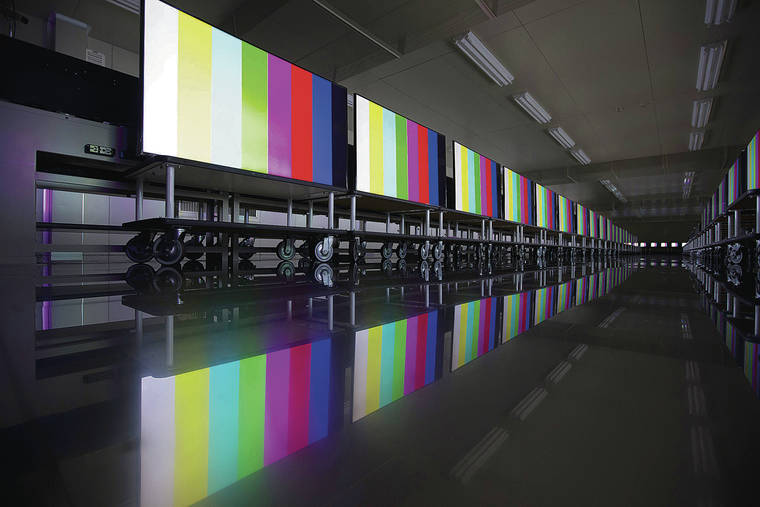‘Liquid crystal” ought to be an oxymoron, but technology has rendered it sensible instead. A crystal is by definition a solid with a repeating, orderly, three-dimensional l
attice.
Liquid crystals are electrically activated to become quasi-crystals that act as polarizing filters.
The wave nature of light manifests as oscillating electric and magnetic fields that wave like a rope tied to a post as it is shaken. A rope can be shaken up and down, from side to side or at any angle in between.
Waves of this type that are vibrating in only one plane are said to be plane-polarized. Shaking a rope through the boards of a picket fence illustrates the concept.
If the rope passes through the space between two boards in a picket fence, only those waves that result from shaking up and down will pass through. The boards will block side-to-side motions, so the pickets filter all but one plane of
vibration.
Normally, light is not polarized. Polarizing materials such as the Polaroid plastic used in polarized sunglasses favor the passage of light
vibrating in one plane.
Molecules in plastic polarizers are long and thin, like the boards on the picket fence. During manufacturing the long polymer chains are aligned. Their size is similar to that of light waves, and they act on the light like the pickets on the rope.
The molecules of a liquid crystal are long and thin like the polymers, but they are electrically unbalanced. One end is slightly negative, the other slightly positive. In liquids the molecules clump together but are free to move about with thermal energy. The clumps are randomly oriented as they form, break up and form new clumps on a nanosecond time scale.
Liquid crystals are liquid, but when they are electrically stimulated, they act as a polarizer.
In an electric field the positive and negative ends of the polymer molecules line up like an array of flags in the wind and mimic the structure of molecules in the Polaroid plastic.
To make liquid crystals visible, they are sandwiched between a light source and a Polaroid filter that is turned 90 degrees to the liquid crystal’s orientation. The Polaroid filter absorbs the light that comes through liquid crystal because of its perpendicular orientation.
In an alphanumeric display, simply toggling the power to a pattern of rectangular compartments filled with the liquid crystal material darkens the appropriate blocks for the character that is to be displayed.
Making a picture on an LCD computer or TV screen is more complicated because of the millions of microscopic pixels needed to make a clear picture and refresh it many times per
second.
An aligning electric field contains information that controls the liquid crystal’s opacity from completely transparent to totally opaque. A higher voltage creates a more complete alignment and a higher degree of polarization.
Each pixel on the screen is an individual liquid crystal package, controlled by a chip in the computer or TV. The circuitry changes the voltage and refreshes the screen to attain the desired level of brightness. For color displays, LCDs with red, green and blue dyes combine to form one pixel of color when viewed from a distance.
Varying the intensity of the three primary colors produces various colors across the range of the visible spectrum.
Richard Brill is a retired professor of science at Honolulu Community College. His column runs on the first and third Fridays of the month. Email questions and comments to brill@hawaii.edu.

